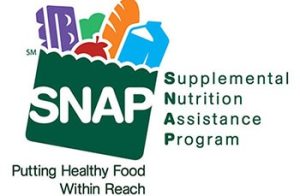Afternoon report: Corn stumbles for a fourth straight day on harvest pressure
Feedback from the Field updates! How is harvest progressing on your farm this fall?! Click this link to take the survey and share updates about your farm’s harvest progress. I review and upload results daily to the FFTF Google MyMap, so farmers can see others’ responses from across the country – or even across the county!
My latest FFTF column is live on our site! Growers are progressing with soybean harvest much more quickly than their corn counterparts and many respondents are already feeling the pressure of dry soil on winter wheat sowing and crop development.
Here are a few of my favorite farmer insights from the past couple weeks.
“[We are] still carrying high 20% moisture as of last week, but [the crop is] standing well,” reported a Southern Iowa corn grower who had not yet started harvesting as of a week ago.
“Yield estimated 15% below 5-year-average due to drought conditions,” shared a corn producer in the eastern side of Michigan. “Sample test weights are in the 54s, down from last year’s (57s).”
“[I expected yields to be] less than previous 2 years,” hypothesized an Indiana soybean producer. “In fact, [the yield result] was even less than I expected. [The crop was] not a failure by any means, but 5 – 8 BPA less than indicated.”
“Extremely dry conditions,” shared a soybean grower in Arkansas a couple weeks ago. “We have used herbicide to kill the plant to harvest. Yields have been above expectations.”
“Dry,” lamented a Kanas wheat producer in the FFTF series. “Very dry,” echoed another winter wheat grower in Northern Ohio.
“No moisture to germinate seed,” added a Missouri wheat farmer.
Corn
Corn prices fell $0.01-$0.03/bushel today, marking the fourth consecutive day of losses for the corn complex amid favorable harvest conditions across the Heartland. A stronger dollar and lackluster export prospects also weighed on the corn complex. Some of wheat’s losses today also spilled over into the corn market this afternoon.
Cash bids for corn around the country today saw some bullish movement, specifically at elevator locations and also at a Western Corn Belt ethanol plant. Cash prices weakened at a Cedar Rapids, Iowa processor. Processing demand is a bright spot for corn cash prices currently, as most other end users (elevators, export terminals) are not offering as high of a cash bid.
By and large, spot corn prices are trading at a premium to futures prices in the Western Corn Belt where crops fell short this summer while prices in the Eastern Corn Belt are being bid out at a discount to futures prices.
After two months of lackluster ethanol production, today’s Weekly Petroleum Status report from the U.S. Energy Information Administration reported the highest weekly ethanol production volume since the beginning of August 2022.
Through the week ending October 14, average daily ethanol output was recorded at 1.016 million barrels/day (42.7M gallons/day). It marked a 9% increase from last week’s volumes and moved closer in line with Summer 2022 ethanol production volumes.
Stock volumes through the reporting period ended just a hair (0.1%) lower this week to 21.8 million barrels. Stock volumes have been falling amid slower production paces, though absolute blending volumes by refiners and blenders has not dipped as severely as ethanol production.
This suggests that the recent production cuts – which are widely regarded to be a consumer contractual response to high gasoline prices – enabled an efficient drawdown of available ethanol supplies, which indicates that any future ethanol cuts may not be as severe as the ones experienced over the past two months if consumers continue to pull back gasoline consumption in response to higher fuel prices.
Soybeans
Soyoil futures prices notched a four-month high during today’s trading session, lifting soybean prices $0.01-$0.05/bushel higher with it. Soymeal futures struggled amid weakened domestic demand opportunities due to flock culling due to HPAI.
Soyoil derived some of its strength from gains in the energy markets today. Competitor palm oil flirted with a seven-week high overnight amid growing concerns about import taxes levied by top global buyer India and excessive rains in Malaysia slowing down production schedules.
Argentina’s grain inspectors’ union, URGARA, is threatening strike activity which could slow export loading paces in the world’s third largest soybean exporter. URGARA employees work at export terminals and account for grain supplies loaded at the ports.
The Buenos Aires local government gave UGARA a five-day conciliatory period, which was an extension of an earlier agreement. After that time, workers could walk away from ports if an agreement is not reached with food processing and exporting companies in Argentina.
Cash prices for soybeans rose at elevator locations in the Eastern Corn Belt today, though prices continue to be offered at a steep discount to futures prices. Similar to corn, cash bids offered by soybean processors are wider in the West and narrower in the East.
Basis weakened further on the Illinois River today as low river levels downstream have slowed barge traffic on the country’s primary riverways. Cash bids at terminals on the Illinois, Ohio, and Mississippi Rivers range between a $0.20-$0.75/bushel discount to November 2022 futures prices.
Cash soymeal prices eased today as the continued spread of highly pathogenic avian influenza (HPAI from the H5N1 strain) is threatening flocks across the country. Poultry consumes approximately 55% of soymeal supplies annually. Slow export paces at the Gulf of Mexico due to low Mississippi River levels also weighed on cash soymeal bids.
Wheat
Wheat prices fell $0.02-$0.09/bushel during today’s trading session. Much of the bearish sentiments were fueled by a strong dollar and weak export volumes expected in tomorrow’s Weekly Export Sales report from USDA.
Forecasts for some light showers in the Eastern Corn Belt improved prospects for newly planted soft red winter wheat crops, which saddled the Chicago SRW contracts with the biggest losses of today’s trading session. Kansas City hard red winter wheat futures prices avoided steeper losses amid drought conditions and slow emergence rates.
Soft red winter wheat cash bids were unchanged today in the Eastern Corn Belt and continued to be offered at a $0.03-$0.30/bushel discount to nearby futures prices. Basis for hard red winter wheat in the Southern Plains remained flat in Texas and Oklahoma but firmed slightly at a Kansas location. Markets remain concerned about crop development in the Southern Plains as sowing for the 2023 crop progress amid dry soils.
Russia announced overnight it would be implementing a grain export quota during its second half of the 2022/23 marketing year. In recent years, these quotas have become standard practice as the government ensures adequate domestic supplies.
Dmitry Patrushev, minister of the Russian agriculture ministry, said overnight the proposed grains quota would span between mid-February 2023 to June 30.
“As for the quota, which we traditionally set in February for the second half of the season, we will certainly expand the export window,” Patrushev said in a statement, as reported by Reuters. “Preliminarily, we plan that its size will be 25 million tonnes without a breakdown by individual cereals. In addition, another 500,000 tonnes will be allocated for export from the far east regions.”
This is not exactly new news – as mentioned earlier, Russia has placed quotas on grain exports in recent years to provide price stability to domestic consumers. Of that 25.5MMT total, 100MMT (3.7 billion bushels) of wheat will be included in the quota system.
Russia likely harvested its largest wheat crop in history this summer, though export paces to its primary buyers in Africa and the Middle East have lagged early in Russia’s export season as insurance premiums and financing costs for Russian wheat cargoes remain high due to economic sanctions from Western countries.
Russia has also been smuggling stolen Ukrainian grain and shipping it into international channels, which increases the risk for buyers and financiers alike. According to a recent Bloomberg report, Russia has been carefully blending stolen Ukrainian grain with its own exportable supplies and turning off tracking devices on its ships to engage in multi-vessel cargo transfers.
“They’re using ship-to-ship transfers between legitimate and illegitimate products to mix them in order to try to launder them into a legitimate supply chain,” Ian Ralby, chief executive of I.R. Consilium, a maritime law and security consultancy. “They are working to launder the grain to create a degree of legitimacy or clarity of title so that they can engage in transactions with countries that really need the grains.”
The Bloomberg report estimates most of the trades are likely being made between Russian sellers and Iranian and Libyan buyers. I highly recommend checking it out!
Weather
Showers will move out of the Great Lakes and far Eastern Corn Belt regions today, according to NOAA’s short-term forecasts. Any accumulation in the region is likely to be light, which should help limit the length of any possible harvest delays.
The rest of the country will continue to enjoy clear skies from today through at least Saturday, paving the way for favorable harvest speeds where crop conditions will allow.
The clear skies have a shelf life, however. NOAA’s 6-10-day forecasts are trending warmer for most of the Midwest but also wetter during the early half of next week. The 8-10-day outlook is forecast to be warm and wet for regions in peak harvest mode during the second half of next week, though perhaps not with as high of a probability as during the earlier half.
This could narrow the window for optimal harvest progress to be made this week, especially if widespread showers grace next week’s forecasts. The Great Lakes region will be the most susceptible to harvest delays and quality downgrades if showers over the next couple days keep growers out of the fields and will likely limit the area’s time available to harvest before the wetter forecasts move into the region next week.
Financials
S&P 500 futures fell 0.79% to $3,690.46 in today’s trading session. Markets remained jittery about looming interest rate hikes that could trigger an economic recession, but the losses were capped by solid third quarter earnings reports from United Airlines, Procter & Gamble, and Netflix.
What else I’m reading this morning on our website, FarmFutures.com:
Virginia Tech ag economist David Kohl explains why working capital can help farmers manage volatility during the remainder of the year.
Advance Trading’s Tom Barry helps farmers to embrace volatility by demystifying futures and options tools.
USDA and USAID are implementing new research strategies to emphasize agriculture’s role in global food security.
Senior editor Ben Potter analyzes how interest rate hikes will impact farmers.
The Inflation Reduction Act is slated to provide nearly $800 million to distressed USDA borrowers, with another $500 million also expected.
Bryce Knorr explains how small supplies and demand dynamics could influence grain market prices in the coming weeks.
Closing Ag Commodity Prices – 10/19/2022
Contract
Units
High
Low
Last
Net Change
% Change
DEC ’22 CORN
$ / BSH
6.845
6.74
6.7825
-0.0275
-0.40%
MAR ’23 CORN
$ / BSH
6.905
6.8025
6.845
-0.025
-0.36%
MAY ’23 CORN
$ / BSH
6.9125
6.81
6.8475
-0.03
-0.44%
JUL ’23 CORN
$ / BSH
6.8525
6.755
6.7925
-0.025
-0.37%
SEP ’23 CORN
$ / BSH
6.37
6.3
6.3375
-0.01
-0.16%
DEC ’23 CORN
$ / BSH
6.24
6.1675
6.205
-0.0125
-0.20%
AR2 ’24 CORN
$ / BSH
6.305
6.2425
6.275
-0.0125
-0.24%
AY2 ’24 CORN
$ / BSH
6.3075
6.3
6.2975
-0.01
-0.08%
JUL ’24 CORN
$ / BSH
6.265
6.2275
6.26
-0.005
-0.60%
NOV ’22 SOYBEANS
$ / BSH
13.785
13.57
13.73
0.01
0.07%
JAN ’23 SOYBEANS
$ / BSH
13.885
13.6675
13.8275
0.0075
0.05%
MAR ’23 SOYBEANS
$ / BSH
13.9575
13.7525
13.92
0.02
0.14%
MAY ’23 SOYBEANS
$ / BSH
14.0325
13.835
14
0.025
0.18%
JUL ’23 SOYBEANS
$ / BSH
14.0625
13.87
14.0375
0.03
0.21%
AUG ’23 SOYBEANS
$ / BSH
13.9175
13.75
13.895
0.0175
0.13%
SEP ’23 SOYBEANS
$ / BSH
13.605
13.475
13.6
0.0275
0.20%
NOV ’23 SOYBEANS
$ / BSH
13.51
13.3675
13.4925
0.045
0.33%
AN2 ’24 SOYBEANS
$ / BSH
13.42
13.42
13.5225
0.035
-0.50%
AR2 ’24 SOYBEANS
$ / BSH
13.4375
13.4375
13.4775
0.04
0.00%
AY2 ’24 SOYBEANS
$ / BSH
13.365
13.365
13.4675
0.0425
-0.45%
DEC ’22 SOYBEAN OIL
$ / LB
70.7
68.27
70.53
1.79
2.60%
JAN ’23 SOYBEAN OIL
$ / LB
68.07
65.96
67.95
1.43
2.15%
DEC ’22 SOY MEAL
$ / TON
404
399
401.9
0.1
0.02%
JAN ’23 SOY MEAL
$ / TON
399.7
395
397
-0.7
-0.18%
MAR ’23 SOY MEAL
$ / TON
394.5
389.8
391.4
-1.4
-0.36%
MAY ’23 SOY MEAL
$ / TON
392
387.4
389
-1.1
-0.28%
JUL ’23 SOY MEAL
$ / TON
392.3
388.2
389.6
-0.8
-0.20%
DEC ’22 Chicago SRW
$ / BSH
8.6275
8.355
8.4125
-0.0825
-0.97%
MAR ’23 Chicago SRW
$ / BSH
8.7975
8.54
8.59
-0.0875
-1.01%
MAY ’23 Chicago SRW
$ / BSH
8.875
8.635
8.695
-0.0725
-0.83%
JUL ’23 Chicago SRW
$ / BSH
8.85
8.6075
8.66
-0.085
-0.97%
SEP ’23 Chicago SRW
$ / BSH
8.865
8.63
8.6775
-0.08
-0.91%
DEC ’23 Chicago SRW
$ / BSH
8.9075
8.6775
8.7275
-0.075
-0.85%
AR2 ’24 Chicago SRW
$ / BSH
8.8875
8.6775
8.7175
-0.07
-1.08%
DEC ’22 Kansas City HRW
$ / BSH
9.605
9.35
9.4175
-0.0275
-0.29%
MAR ’23 Kansas City HRW
$ / BSH
9.57
9.33
9.4025
-0.0225
-0.24%
MAY ’23 Kansas City HRW
$ / BSH
9.5425
9.3125
9.3825
-0.025
-0.27%
JUL ’23 Kansas City HRW
$ / BSH
9.4575
9.2425
9.315
-0.025
-0.27%
SEP ’23 Kansas City HRW
$ / BSH
9.4225
9.23
9.2875
-0.025
-0.27%
DEC ’23 Kansas City HRW
$ / BSH
9.41
9.27
9.2725
-0.06
-0.64%
AR2 ’24 Kansas City HRW
$ / BSH
0
#N/A
9.2625
0
0.00%
DEC ’22 MLPS Spring Wheat
$ / BSH
9.6725
9.4975
9.5225
-0.0375
-0.39%
MAR ’23 MLPS Spring Wheat
$ / BSH
9.7375
9.56
9.6
-0.03
-0.31%
MAY ’23 MLPS Spring Wheat
$ / BSH
9.7925
9.62
9.655
-0.0325
-0.34%
JUL ’23 MLPS Spring Wheat
$ / BSH
9.795
9.62
9.65
-0.045
-0.46%
SEP ’23 MLPS Spring Wheat
$ / BSH
9.38
9.2875
9.2975
-0.0475
-0.51%
DEC ’23 MLPS Spring Wheat
$ / BSH
9.33
9.2525
9.2925
-0.0375
-0.40%
AR2 ’24 MLPS Spring Wheat
$ / BSH
0
#N/A
9.0875
0
0.00%
DEC ’21 ICE Dollar Index
$
112.995
111.78
112.865
0.871
0.78%
NO ’21 Light Crude
$ / BBL
86.2
82.59
85.25
2.43
2.93%
DE ’21 Light Crude
$ / BBL
85.02
81.72
84.2
2.13
2.60%
NOV ’22 ULS Diesel
$ /U GAL
4.0164
3.824
3.8881
-0.1054
-2.64%
DEC ’22 ULS Diesel
$ /U GAL
3.6524
3.5082
3.5429
-0.0862
-2.38%
NOV ’22 Gasoline
$ /U GAL
2.6572
2.5403
2.635
0.0844
3.31%
DEC ’22 Gasoline
$ /U GAL
2.4883
2.395
2.465
0.0576
2.39%
OCT ’22 Feeder Cattle
$ / CWT
175.475
174.7
175.325
0.5
0.29%
NOV ’22 Feeder Cattle
$ / CWT
178.675
177.45
177.925
0.1
0.06%
CT2 ’21 Live Cattle
$ / CWT
149.4
148.5
149.15
0.675
0.45%
DE ’21 Live Cattle
$ / CWT
151.4
149.725
151.325
1.55
1.03%
DEC ’22 Live Hogs
$ / CWT
87.5
86.25
87.25
0.775
0.90%
FEB ’23 Live Hogs
$ / CWT
89.05
87.625
88.9
1.1
1.25%
OCT ’22 Class III Milk
$ / CWT
21.77
21.73
21.77
0.03
0.14%
NOV ’22 Class III Milk
$ / CWT
21.32
20.7
21.28
0.58
2.80%
DEC ’22 Class III Milk
$ / CWT
20.06
19.53
20.06
0.35
1.78%
Get our top content delivered right to your inbox. Subscribe to our morning and afternoon newsletters!






